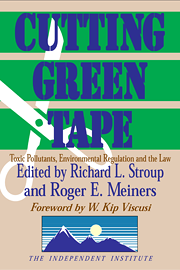Are you ready for the fastest jump in heroin use in this country’s history? Are you ready for heroin to take the place of cocaine as the illegal drug of choice? Well, get ready, unless we reform our current, federally-dominated drug policy.
The federal government’s marijuana interdiction program has sharply decreased imports. The result: The price of high-quality marijuana has skyrocketed to twice the price of gold. No part of the federal government’s drug program operates in a vacuum, however. Targeting marijuana shipments—which are bulky and easy to spot—has created an economic incentive for drug traffickers to switch to something compact and easy to conceal—cocaine. Cocaine prices have plummeted by 50 to 90 percent over the past ten years, because supply has increased relative to demand. No one needs a degree in economics to understand why: Given the same risks, any well-run drug cartel will ship the most profitable product. This drug, until recently, was cocaine. A Horse of the Same Color Sadly, this is no longer true. The South American drug cartels have discovered that growing opium poppies and refining their gum into heroin yields ten to twenty times more profit per unit shipped than cocaine. Peasants can annually earn $500 for one hectare of subsistence crop, $1,500 for coca, and $4,500 for opium poppies. Distributors can sell cocaine for perhaps $15,000 per kilo, but heroin brings $150,000 or more. Consequently, shipments of South American heroin to the United States are increasing at an alarming rate. Drug-interdiction agents in Peru, Colombia, and elsewhere are discovering a dramatic increase in the number of poppy fields in their nations. And street junkies in the U.S. are getting top-quality “horse” at bargain prices.
Heroin, like all drugs, can be ingested in a variety of ways—orally, intra-nasally, inhaled via smoking, or injected by needle. For the past seventy years in America, injection has been the preferred route, because this is the most efficient way of delivering what has been a very expensive drug. But the needle brings with it the risk of AIDS and other diseases, so consumers and suppliers are looking for, and finding, safer delivery systems. The rising supply and falling price of heroin will soon make the needle unnecessary.
The prospects are grim, for what will happen with heroin is what happened with cocaine and other drugs. New methods of delivering the drug to the body will be devised; heroin will be combined with other drugs to enhance or mask specific psychoactive effects; and, above all else, new names will be devised, to differentiate products and to create market niches for them. As heroin supplies rise and prices fall, drug entrepreneurs will vigorously promote the drug in any form and under any name which people will buy. Just as marijuana and then cocaine moved from back rooms to Main Street, heroin will emerge from the shadows.
Federal drug policy is the unwitting engine behind this product substitution. By imposing a uniform policy on a nation of diverse individuals, Washington has created conditions that make the heroin trade obscenely profitable. There is, however, a realistic way to change the future. Forget full legalization at the federal level—it’s a pipe dream. Forget an all-out war on illegal drugs—our standard of living and constitutional liberties would be demolished. Consider instead a constitutional alternative, one that is firmly rooted in the Tenth Amendment. Change the current federal drug law to elevate the legal status and power of state and local jurisdictions in the war on drugs. We need simply amend the Comprehensive Drug Abuse, Prevention, and Control Act to eliminate the federal monopoly on drug policy. State governments would be permitted to pursue any drug policies they chose; the federal role would consist of preventing interstate violations of the new laws.
The elimination of the monopoly on drug policy—and what monopoly ever works well?—will force states and municipalities to devise innovative drug policies. (Under current federal policy, only drug dealers are innovating.) A constitutional alternative will offer Americans the opportunity to choose among drug policies. It will also sharply reduce the fear and hopelessness felt by so many in the face of escalating drug-related crime. Only with such an approach will we find the right combination of law enforcement, education, and rehabilitation in the war on drugs. Otherwise, today’s federal policy will ensure that heroin becomes the drug of the nineties.








